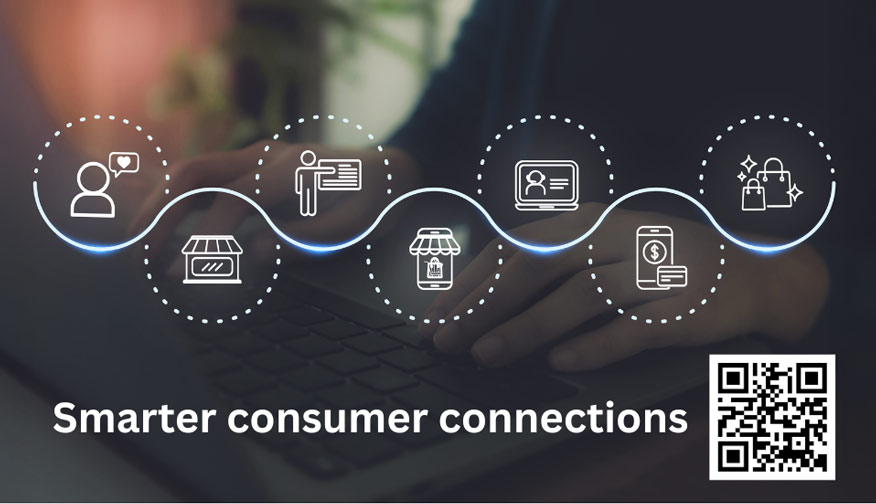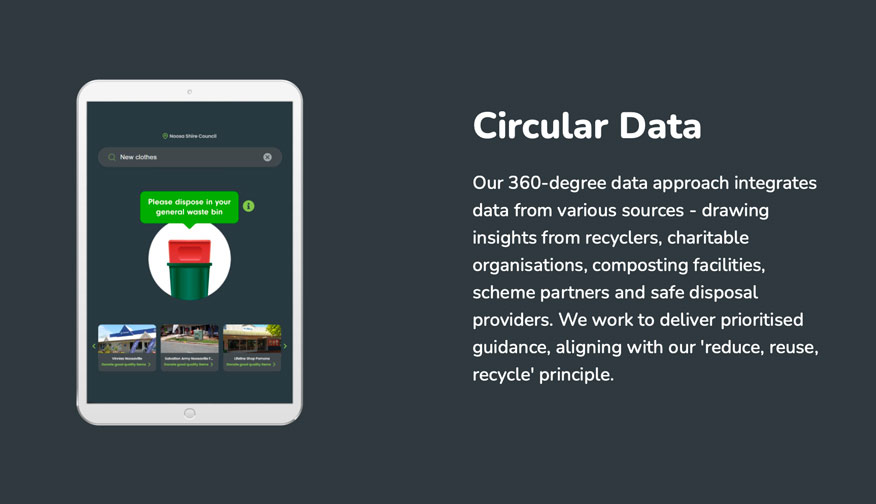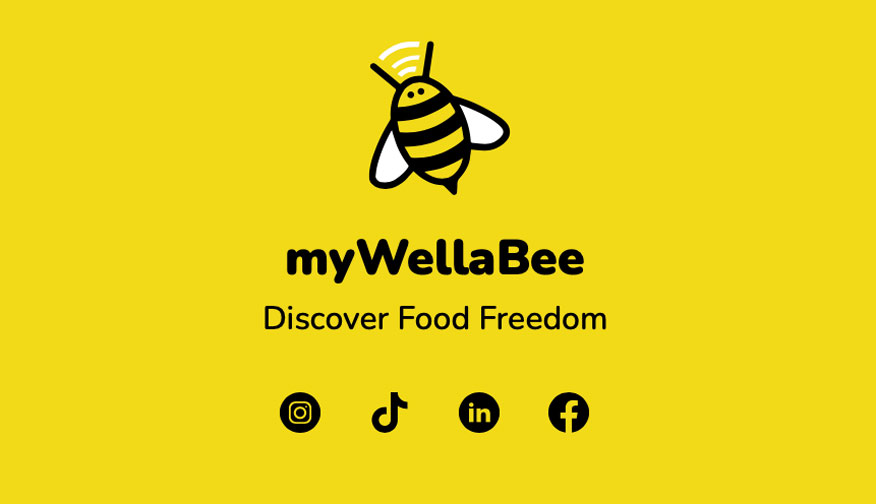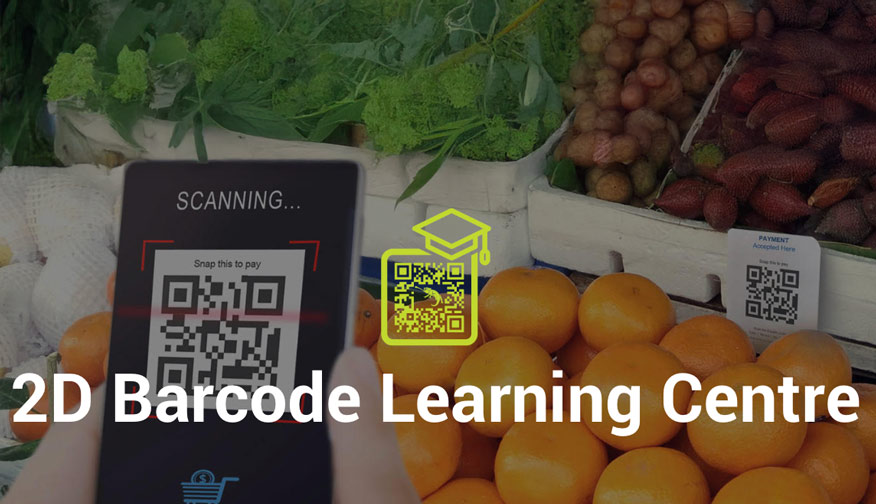Jul 15, 2025 by Matt Nichol
Australia’s supply chains are undergoing a quiet revolution – and it’s being led by a square. That square is the 2D barcode, a next-generation packaging identifier that’s doing much more than just scanning at a checkout.
Consumer-facing apps such as RecycleMate and myWellabee are early examples of how Australians are already using 2D barcodes to get more value at shelf. But what’s more important for manufacturers is how 2D barcodes are being integrated upstream: into packaging, labelling and traceability systems that connect the factory floor to the front of store. And now, straight to the consumer’s phone.

Traditional 1D barcodes, like those seen on virtually every product in a supermarket, only hold a Global Trade Item Number (GTIN), which links to product data stored in retailer or wholesaler databases.
In contrast, 2D barcodes such as QR Codes or DataMatrixcodes can hold far more information directly on-pack – including best-before dates, batch numbers, allergen warnings or dynamic links to digital content.
Australians often want to recycle properly, but local rules vary by council. RecycleMate, developed by the Australian Council of Recycling and Planet Ark, lets users scan packaging barcodes and instantly see if, and how, they can recycle the item locally.
Where 2D barcodes add value is in enabling product-specific disposal instructions. Rather than relying on AIimage recognition or generic GTIN databases, a QR code embedded with GS1 Digital Link can take users directly to a brand’s validated recycling instructions for that exact item or variant.
Brands and manufacturers focused on sustainability and circular-economy goals stand to benefit greatly. By providing accurate, item-level recycling information, 2D barcodes empower consumers to make better disposal choices, reduce contamination in recycling streams, and build trust through transparency.

Image source: https://recyclemate.softr.app/about
myWellaBee helps Australians with dietary restrictions navigate supermarket aisles safely. By scanning a product’s 2D barcode, users can instantly see if it contains allergens, gluten or other flagged ingredients – down to the batch level, if the brand provides that data.
This is particularly relevant for food manufacturers seeking to differentiate on health transparency. With QR codes linked to real-time centralised ingredient data, brands can support health-conscious buyers and meet FSANZ allergen labelling requirements more effectively.

Image source: https://mywellabee.com/about-us/faq
In 2019, Woolworths began rolling out 2D barcodes on private-label products in partnership with GS1 Australia to encode expiry dates, batch numbers and serialisation data– unlocking real-time benefits for both in-store operations and shoppers.
For consumers, this means fresher products on shelf and better visibility of expiry dates. Automatic markdowns are triggered for items nearing expiry, helping customers save while reducing food waste. At the same time, retailers benefit from faster, more accurate stock checks and targeted product recalls.
In early trials, Woolworths reported a 44% boost in productivity during receiving, and a 21% improvement in date code checks. This demonstratedjust how 2D barcodes streamline operations while delivering more transparent, value-driven shopping experiences.
Mondelez International has launched “Snacking Right”, a mobile-friendly digital platform accessible via on-pack QR codes on Cadbury products in Australia. This initiative provides consumers with real-time recycling information, insights into sustainable sourcing and tools for mindful snacking.
By scanning the QR codes, shoppers can access details about Mondelez’s commitment to sustainability, including the use of 30% recycled content in Cadbury Dairy Milk packaging and participation in the Cocoa Life program, which supports cocoa farmers’ livelihoods. The platform also introduces consumers to mindful snacking practices, developed in partnership with behavioural scientists, to encourage more attentive and intentional consumption.
This approach transforms everyday packaging into a dynamic communication channel, fostering deeper connections between the brand and its consumers.
Nestlé is pioneering the use of accessible 2D barcodes to improve inclusivity for vision-impaired shoppers. In a UK-first initiative, Nestlé partnered with tech company Zappar to add accessible QR codes” to packaging across a range of popular products – including KitKat, Aero and Smarties. When scanned with a smartphone, these codes deliver audio information such as product name, ingredients, allergen warnings and recycling instructions.
While initially launched in the UK, the implications for Australian manufacturers are significant. As 2D barcode adoption grows, there’s a clear opportunity to enhance packaging not just for traceability or marketing – but for accessibility. These developments align with growing global standards around inclusive design and provide another powerful way for manufacturers to build trust and connection with all consumers.
For food, beverage and packaging producers, the value of 2D barcodes goes well beyond traceability compliance:
At Matthews Australasia, we’re already helping manufacturers prepare for the 2027 GS1 transition – with integrated coding and labelling systems that print high-quality 2D codes.
As more consumer-facing apps like RecycleMate and myWellabee enter the mainstream, Australian shoppers are becoming accustomed to scanning packaging for answers. Manufacturers who embrace 2D barcodes today will be better positioned to lead on transparency, compliance and customer experience.
Our step-by-step guide to navigating retailers’ 2D barcode requirements for 2025 outlines everything you need to know to stay compliant.
You can also explore our 2D Barcode Learning Centre for expert insights, practical tools and the latest technologies to support your setup.
Or get in touch with our team – we’re here to help you make the transition smoothly and confidently.
